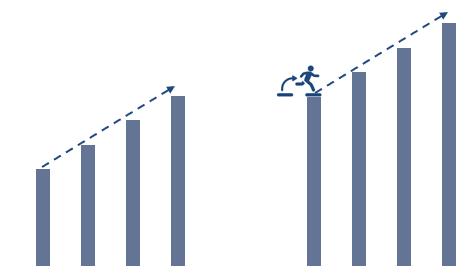In the fast-paced world of finance, technological advancements continue to transform the industry. Automation is increasingly adopted to handle routine tasks, streamline processes, and improve efficiency. However, while automation offers numerous benefits, it is crucial to strike the right balance between machines and human expertise to ensure optimal outcomes. Here’s how financial institutions can effectively integrate automation while still leveraging the invaluable insights and decision-making skills of human professionals.
1. Identify Repetitive and Time-Consuming Tasks
The first step in balancing automation with human expertise is identifying areas where automation can truly add value. Repetitive, time-consuming tasks such as data entry, transaction processing, and reporting are prime candidates for automation. By using software solutions and artificial intelligence (AI), these tasks can be completed more quickly and accurately, freeing up human workers to focus on tasks that require judgment, creativity, and complex decision-making.
2. Leverage Automation for Data-Driven Insights
Financial professionals must make decisions based on vast amounts of data. Automation can play a key role in analyzing large datasets, identifying trends, and providing actionable insights. Machine learning algorithms and AI can sift through data far more efficiently than a human ever could, allowing financial analysts to make more informed decisions. However, these insights must be interpreted and applied by experienced professionals who understand the broader market context and the nuances of individual clients or situations.
3. Rely on Human Expertise for Relationship Management
While automation excels at handling data and executing tasks quickly, it cannot replace the human touch that is essential for relationship management. Building strong, trusting relationships with clients and stakeholders requires empathy, emotional intelligence, and personalized attention. Financial advisors, for example, must connect with clients on a personal level, understand their unique goals, and provide tailored advice. Automation can support these interactions by providing relevant data and reports, but it should not replace the essential human connection.
4. Enhance Risk Management with Automation and Human Oversight
Risk management is one of the most critical functions in finance, and it requires both precision and adaptability. Automation can be highly effective in monitoring markets, tracking transactions, and identifying potential risks in real time. AI-powered systems can help detect fraud, assess credit risk, and predict market fluctuations. However, human expertise is necessary to assess the context of these risks, particularly when unusual or unprecedented events arise. A balanced approach involves using automation for continuous monitoring, while human experts step in to evaluate complex, high-stakes situations and make judgment calls.
5. Foster Continuous Learning and Adaptation
As technology continues to evolve, it’s important for financial professionals to adapt and stay ahead of the curve. Automation can handle a significant portion of the day-to-day tasks, but humans must stay engaged in learning and skill development. Financial experts should continuously update their knowledge of the latest technologies and trends to ensure they are using the tools at their disposal effectively. Similarly, automated systems should be constantly monitored and refined to improve performance and adjust to changing market conditions.
6. Maintain Ethical and Regulatory Standards
Automation is undoubtedly a powerful tool, but it must be implemented in a way that adheres to ethical standards and complies with regulations. In finance, this is particularly important due to the sensitive nature of financial transactions and the need for transparency. Human oversight is essential to ensure that automated systems are functioning in a compliant manner and that the results align with legal and ethical standards. Financial institutions must also provide clear accountability for any decisions made by automation systems, with human professionals taking responsibility for the final outcomes.
7. Evaluate and Iterate the Balance Regularly
Finding the right balance between automation and human expertise is an ongoing process. Financial institutions should regularly evaluate the effectiveness of their automation tools and the impact on their teams. Feedback from employees, clients, and stakeholders is essential in refining the approach. As technology advances and the market landscape changes, adjustments will be necessary to ensure that both automation and human skills are being used to their full potential.
Achieving a balance between automation and human expertise in finance is not about choosing one over the other. Rather, it’s about understanding the strengths of both and leveraging them in a complementary way. Automation can provide speed, accuracy, and data-driven insights, while human professionals bring the critical thinking, creativity, and personal touch that are essential in navigating the complexities of finance. By carefully balancing these elements, financial institutions can create more efficient, effective, and customer-centric operations.

Leave a Reply